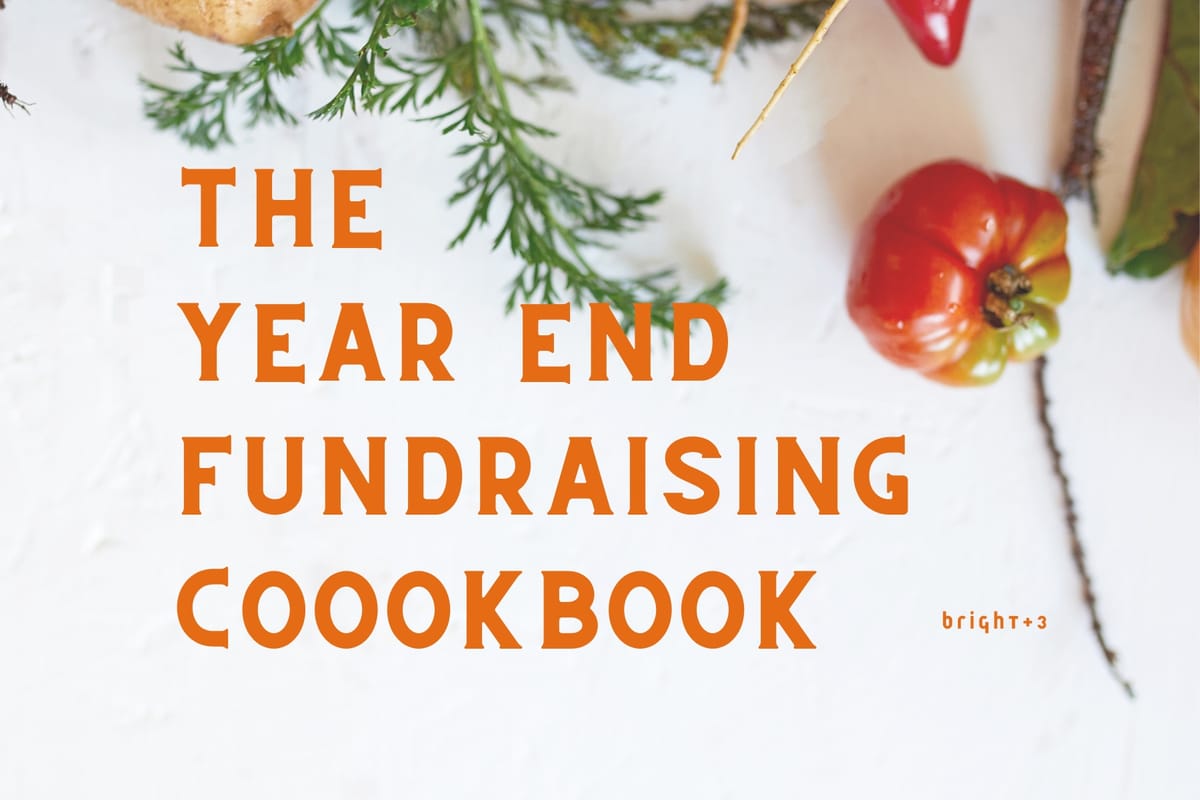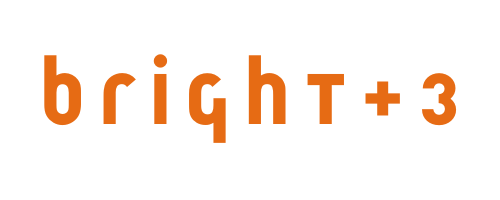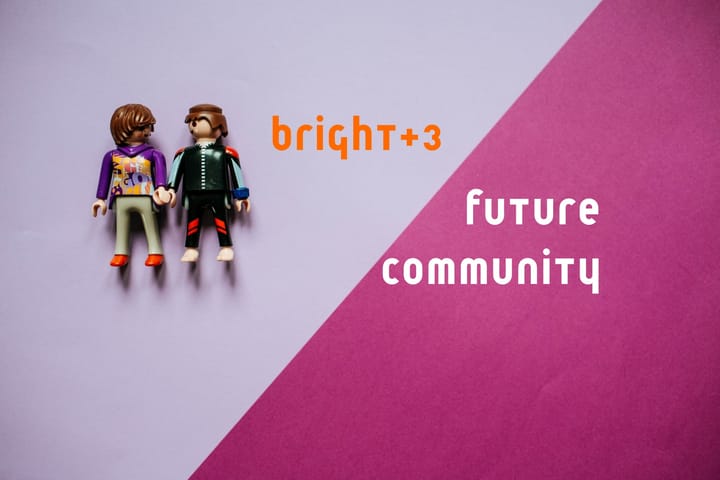The Year End Fundraising Cookbook
Your guide to the ingredients, recipes, spices and tools needed to raise more money this Year End Fundraising season.

Nonprofits can raise up to 20% of their total fundraising revenue in December. And half of their annual online revenue in the last week of the year.
It can be a high pressure and high stakes time for online fundraisers and digital teams. And it can be too easy to make members and supporters feel like they're just around to get too many emails and too many fundraising asks.
So let's approach year-end fundraising as a gathering, maybe even a celebration. It's a time to bring people together talk about what's possible, to inspire, to reflect on the challenges and bring hope for the future.
The Year End Fundraising Cookbook is your guide to creating a gathering that brings together old and new friends, supporters, donors, and people who will show up for you when you need help, a hug, a laugh, a stern look you didn't ask for, or even someone to come down to city hall and fight alongside you.
Or maybe that's just my big family meals. Let's get started!
Like any good cookbook, especially one that gets dog-eared and worn after being passed from hand to hand over time, the Year End Fundraising Cookbook has some main parts. This one includes:
- Recipes
- The right tools
- Ingredients
- Spices!
- Set the table: It's time to eat

Recipes
These are some of our favorite parts of any fundraising campaign.
- Set your goals: Have a target number of donors or a target donation amount, and have a reason for your goal (what will be the impact of this number of donors or total donations?)
- Craft a story: Secure a matching donation and craft a compelling story. A story that shows the impact the donations will have and the lives that will be changed positively.
- Pick the right channels: Decide which channel or channels to use. For instance: direct mail, text messaging, and social media.
- Know your timing: Get familiar with the dates associated with the campaign, such as when emails need to be sent and followed up on.
- Build a team: Decide on the people that will make up your team, their roles, and how they will contribute to the campaign.
- Practice: Develop drafts, share, and get feedback.
- Be flexible: Set the table and get ready to measure people’s reactions so you know what works, and what needs seasoning.

Tools to have in your kitchen
A chef loves their knives, bowls, mixers, cutting boards, timers and more. Bring your tools, too.
- A Timeline: Begin your year-end messaging after Giving Tuesday (December 2) or even mid-November through Dec 31st. Use the full runway to present to donors the impact they can make.
- A message sequence: In the weeks leading up to December 31, focus your messages on four key themes: how donations make a difference, the challenges they solve, the donor’s vital role, and the lasting impact of their support.
- Writers, designers, videographers, and (yes), people to review it all: Every great cook has a team. It could be sous chefs and line cooks. Or it could be a couple kids, aunts or neighbors helping prep everything. Every fundraising campaign is a team effort. Have your team ready, scheduled, and resourced.
- Gear Up: Dec 31st is the big meal. Get everyone ready by communicating and building urgency around the deadline. But be sure to lean into the story, hope, and the impact that a donation makes. It's not about your deadline, it's about the donor and the community!
Gather your Ingredients
Get the list out and get everything out on the counter.
Emails: There is no right number of emails. Aim for 5–7. Depending on your start date, you may send 9–11 or even more. A sample cadence:
- Nov 15: Launch email
- Nov 22: Reminder email
- Dec 2: Giving Tuesday (1–2 emails)
- Dec 9, 16, 21, 28, 30: One email each day
- Dec 31: 1–2 emails
A combination of words and pictures: The year-end story should showcase all parts of your work. In emails, on your website, in blog posts, on your social media. Show photos and words from your supporters, your team, and the community.
Segments and variations: Just like not everyone eats meat or dairy, not all supporters are the same. Some may want more or fewer emails. Tailor your messages for different groups, like current donors or activists vs potential donors.
Attention to how the ingredients are coming together: You might need to turn up the heat with an extra email or add a new ingredient, like an appeal signed by a supporter or board member.

Add some spices
Don't be boring or bland. Try something new. Stand out from the crowd a bit.
- Use a lightbox: A donation message and/or form that appears over your home page or other web pages.
- Invite people to become recurring donors: Year-end is a time to bring people together. Make the gathering (and the investment) last all year. Use recurring donor messaging and landing page tests to let people pay a little more each month and have a stronger impact all year long.
- Put your thank yous to work: A thank you page and email can be great time to make a fundraising ask (or even get a bigger gift). Don't just thank people for taking an action, ask them to take the next step with a donation.
- Advertise: Paid or organic, advertisement that sends people to donation forms and landing pages. Advertise to your social media followers.
- Dedicate content for social media and other audiences: Many/most people on your email list are following one or more of your social media accounts. Use those channels to share goals, tell stories with photos and video, and remind supporters to give. This reinforces the messages in your emails.
- Run A/B tests on your forms, subject lines, and messages.

Time to eat
Any cook can throw together a meal. But a chef prepares an experience and knows how to improve on it time after time.
- Get your emails scheduled: With a plan, a story in hand, and tests ready, you can have your emails and posts prepared in advance.
- Document: Document your work, track results, get feedback, and share your reporting so you can learn and improve. This might actually be the most important part.
- Follow up with donors: Thank them again. Report on progress. Give them a reason to feel as a part of the experience so that they will join your next meal.

What's next?
If you're reading this in October or November, it's time to get cooking. If you're reading this earlier in the year, remember that every fundraising campaign needs its own recipes, ingredients, tools and spices. Every fundraising campaign is a time to bring out the Cookbook, test recipes, and bring people to the table to have an impact.
Let us know if you're looking for help getting ready, putting the recipes together, or just want to talk about your own Year End Fundraising Cookbook.

